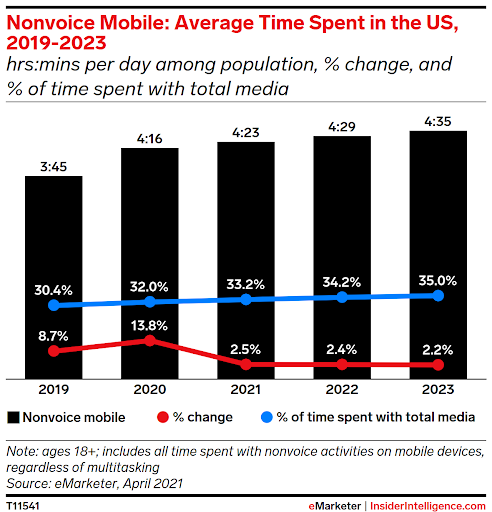Omnichannel Marketing: Smart Strategy That’s Here to Stay
From hotel chains to apps and software companies, the word “omni” is, well, omnipresent in our world. In digital, it means exactly what you think it does: everywhere, and everything. Omnichannel digital marketing is marketing that reaches beyond a single channel to find consumers wherever they are, whether they’re checking their email, using a mobile device, scrolling through social media, shopping online, or visiting a retail store.
Why is this kind of strategy important? Advertising across devices (also called cross-device marketing) enables brands, advertisers, agencies, and marketers to seamlessly connect with their customers, create a consistent brand experience, boost engagement with a relevant message, and even increase conversion rates.
Omnichannel Marketing vs Multichannel Marketing
Unlike with multichannel marketing, which doesn’t necessarily involve synchronized messaging, omnichannel marketing provides a seamless brand experience that moves with consumers across all platforms, channels, and devices. Those channels are connected by way of your consistent ads, thus immersing the consumer in your brand. As such, omnichannel also allows you to optimize your ad performance to boost KPIs like ad retention, conversion, and overall brand growth.
The Perks of Cross-Device Marketing
As expected, consumers are spending more time with digital media than ever. Some 70% of American consumers now use social media, and they’re clocking an average of 142 minutes per day on social sites. They’re also devoting 4.2 hours a day to smartphone apps. When it comes to shopping, though, their habits have undergone some changes. Click-and-collect, or “buy online, pick up in store” (BOPIS), grew by 106.9% from 2019 to 2020, according to reports. Meanwhile, a third of all US media is now on mobile.
In other words, the path to purchase is no longer a straight line. It’s increasingly common for consumers to begin their journey on one channel and end it on another. Today’s brand marketers need to keep time with customers to increase the odds of converting. “Whether shopping online or at a physical store, customers’ expectations are rising. Personalized experiences can translate into more sales in the future,” writes Shopify in its Predictions for the future of Retail report.
With all of that in mind, omnichannel marketing is an important strategy because it is:
1
2
3
Applications for Cross-Device Targeting
To make the most of omnichannel marketing, brands should familiarize themselves with cross device targeting. This is what enables you to identify and target a single user across multiple devices, promoting the same message or product all the while.
The beauty of a cross-device marketing approach is that it allows marketers and advertisers to tell their brand’s story through sequential messaging. They can deliver content that’s personalized, engaging, and highly relevant because it’s based on the user’s interests and needs at a single moment in time. Needless to say, a cross-device strategy can drive deeper engagement and ultimately lead to a loyal customer base.
How Cross-Device Advertising Works
Through the use of a device graph, companies like GroundTruth are able to map IP addresses back to their known user dataset and gain a unified view of customers. Mapping and previous offline behavior is used to target those users across multiple channels like: CTV/OTT, Desktop and Mobile, as well as report back on in-store visit attribution.
The Pros and Cons of Spanning Channels
As with any form of marketing, there are advantages and drawbacks to cross device advertising. Diversifying your ad channels can lead to increased costs, and put you head to head with more industry competitors. At the same time, it has become the most logical approach for reaching modern-day customers, proving itself to be incredibly effective in spite of those supposed cons. This is particularly true when you consider the importance of reaching consumers through mobile, which is so central to cross device campaigns.
Omnichannel Marketing in Action
GroundTruth’s omnichannel framework allows brands to reach their prospective consumers in the right mindset, channel, and serve an ad to them with the most relevant message. GroundTruth is able to use its proprietary data collection methodology to build audiences that are based on consumers’ intent, as seen in the real world, and target them based on previous or real time behavior. This approach allows us to build an omnichannel product that helps brands reach consumers at every step of the marketing funnel with the most relevant data, and report back on the number of users who saw an ad and visited a POI.
Let’s take the prospective auto buyer’s path to purchase as an example of why reaching them at every step of the consideration phase is important. At GroundTruth we know that our audience is in the market for a car since we see them visiting multiple agencies at a high frequency and recency. We package this audience, and then allow prospective brands to target them with our unique omnichannel approach:
1
2
3
Let’s take another example of shopping for a new jacket. A consumer may first see a jacket on a website, but then an ad for it appears while they’re scrolling through Instagram, or when they’re checking Facebook. Later, while that same shopper is walking near the retailer that sells the jacket, and when they pass by, they may even get an ad for it on their mobile device.
In each of these situations, the consumer is seeing the very same jacket they expressed an interest in. Since they’ve already demonstrated intent, the subsequent ads they receive for it are timely and relevant. It’s a win-win scenario for brands and consumers: the ads relate directly to something the customer wants or needs, which makes them much more likely to convert.
The Future of Omnichannel Marketing
What does the future hold for omnichannel marketing? In the months to come, marketers will be capitalizing on every opportunity to connect with customers. Out-of-home (OOH) is growing in popularity, with ad spending increasing by $14.5% in 2021 to reach close to $7 billion. Also in 2021, connected TV (CTV) topped $14 billion, and it’s predicted to more than double in the US by 2025 to surpass $30 billion.
With reliance on these channels on the rise, now’s the time to make the most of the situation with an omnichannel marketing strategy. Interested in learning more? Connect with us to see what an omnichannel marketing strategy can do for your brand.







